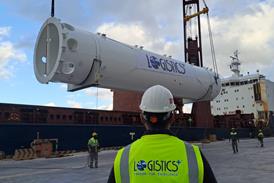March 13 - The Great Lakes - an important North American waterway that connects to the Atlantic Ocean through the St. Lawrence Seaway System - has seen the heaviest ice coverage for more than 40 years, says the US National Ocean and Atmospheric Administra
On March 6, 2014 approximately 92 percent of the surface area of the Great Lakes was covered in ice - an area spanning 86,000 square miles. A cold winter with months of below-freezing temperatures across the northern United States contributed to the unusually high coverage.
Four of the Great Lakes were more than 90 percent under ice, according to George Leshkevich, a physical scientist with NOAA's Great Lakes Environmental Research Laboratory, something that has not happened since 1994. The 40-year average ice coverage for all the lakes is approximately 51 percent, the NOAA added.
Lake Ontario, however, was only 59 percent covered because of its greater depth and smaller surface. The shallower Lake Erie was 96 percent iced-over.
On March 11, as warmer spring weather systems approached, the ice-covered area had 'slipped' to 83 percent.
However, despite the unusually high coverage, the opening of the seaway system is only delayed by five days, explained Tim Heney, ceo of Thunder Bay Port Authority - located at the head of the Great Lakes/St. Lawrence Seaway System on Lake Superior. "The first ship of the season in Thunder Bay is expected in the first week of April … no project shipments are likely to be affected by the delayed opening," he added.

















